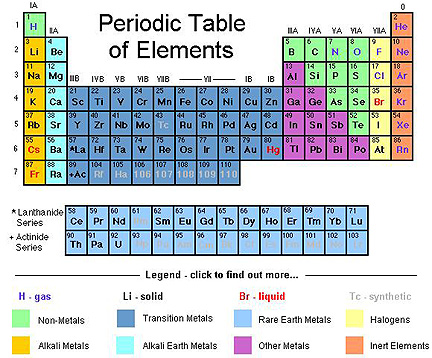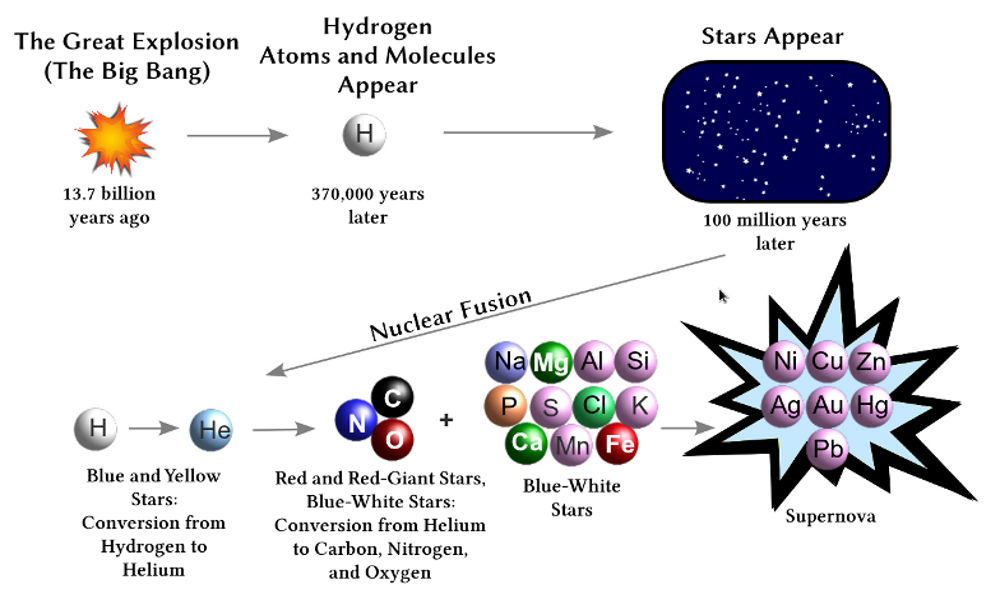How the atmosphere, hydrosphere, solid Earth, and biosphere are each related to the death of a star that occurred billions of years ago?
1 Answer
We are made of star dust. See below how that's true:
Explanation:
To understand where everything we see on Earth comes from, we first have to understand what it's all made of. The answer that is common to all of it (the atmosphere, hydrosphere, biosphere, and the material that is the Earth) is atoms (and so structurally we've gone more basic than chemicals and molecules).
Some of the more common atoms we have on and around Earth are Oxygen, Hydrogen (these are the constituent parts to water), Carbon (this is the basic building block upon which all life is made - you may have heard the term "carbon-based life form"), Nitrogen (this is what roughly 78% of the atmosphere is made of), Iron (this is what our blood uses to carry oxygen), and a whole host of other elements. In fact, there are 92 elements that can be found in, on, or around Earth (all the elements on the periodic table, up to and including Uranium).

And so the question is - where did all these different types of atoms come from?
To get to that answer, we have to start at the absolute beginning of time - just after the Big Bang. This was a time when there were no atoms at all - they were too big and the early Universe too energetic to exist - the bits and pieces that make up atoms would smash together and then be ripped apart. However, as the Universe expanded and it became less energetic, those bits and pieces started to come together and they formed the most basic atom there is - Hydrogen. One proton, one electron.
As the Universe expanded even more and became even less energetic, the Hydrogen began to form bonds and formed
But over time, as gravity pulled and nudged the Hydrogen into larger and larger groupings, as the temperature rose to many thousands of degrees within these vast groupings of Hydrogen, they would start a process called Nuclear Fusion - in essence, the temperature within the star caused the Hydrogen to fuse together, creating Helium, the second element on the periodic table, and also cause energy to be released, keeping the star very very hot.
Stars were born and as they continued to smash atoms together, as they continued to fuse, more and more elements were created, up to the element Iron, number 26 on the periodic table. But some stars weren't done yet.
Huge stars go through a process of nova - essentially exploding. Some stars go through an even more massive explosion called a supernova. It's in these explosions where the 26 elements that were created in the belly of a living star are smashed together one last time, creating all the 92 naturally-occurring elements we talked about earlier.

The various atoms combine to form molecules, chemicals, and all the stuff that make up the air, the water, the solid Earth, and the life on, in, and around it.
It's sometimes said that we are made of star dust - and this is why.

